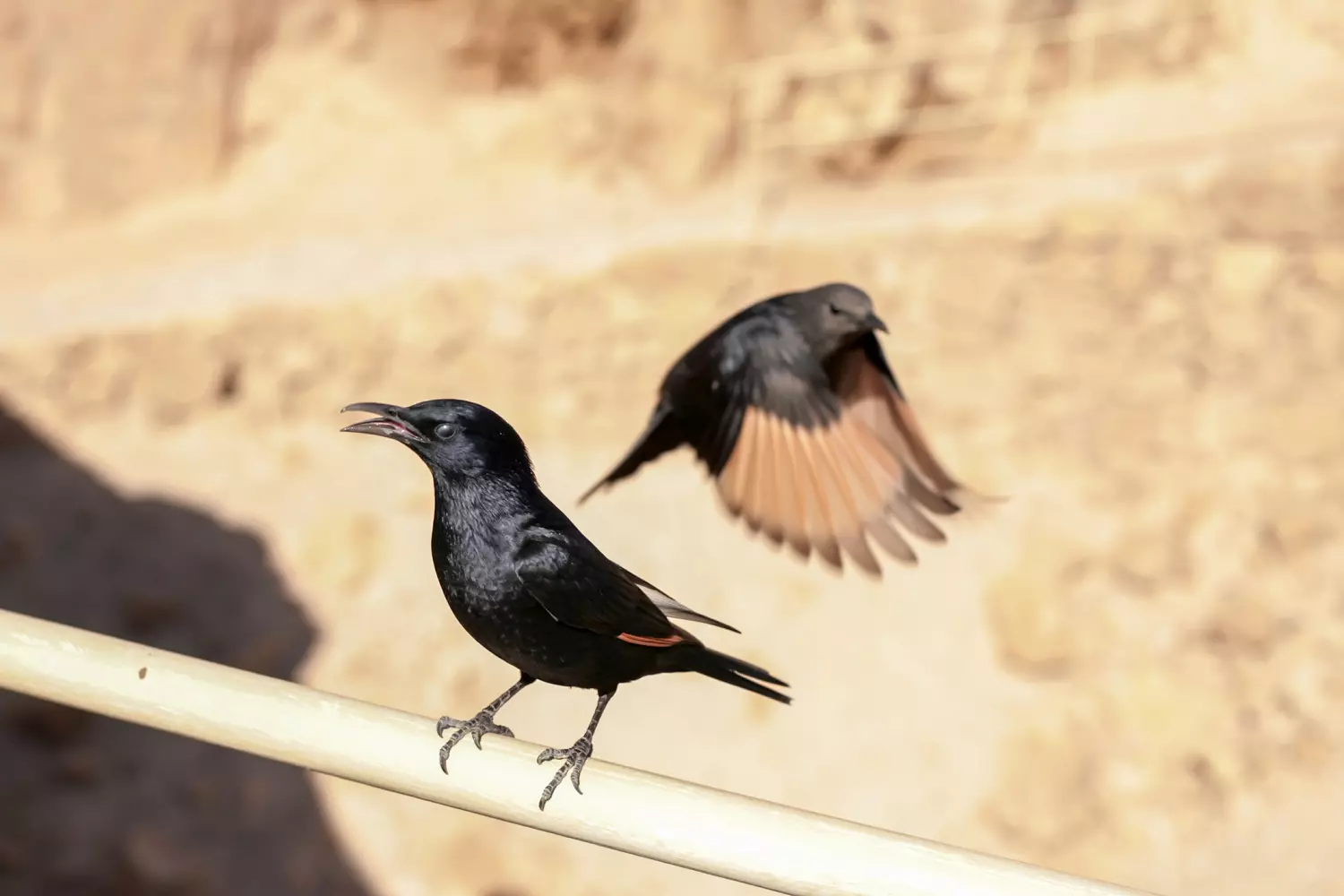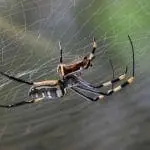[Originally published as: Let the Animals Teach Us: “Look at the Birds of the Air.”]
Near the Sea of Galilee in Northern Israel, the Messiah preached a sermon on the mountainside that brought forth a moral manifesto that would shake the religious world to its core. The Sermon on the Mount delivered by our Creator and Savior, Jesus, was directed to His disciples and followers along with great multitudes of people. The sermon was given with a meticulousness and clarity that only God could deliver.
His audience understood His message no matter who they were and this message is still applicable to us today. This was the first time our Lord spoke to the public and instead of directing His audience to higher theological doctrine, He chose to teach those who followed Him a more practical lesson of how to live our lives as we follow Him in Christ’s righteousness. Our Lord, the master teacher, gave insightful instruction with excellent examples as illustrated in one of the most popular messages in all of history. He taught us not to worry about our physical needs in Matthew 5-7 and He directly pointed us to the birds of the air.
Birds Teach us not to Worry
The birds of the air are a perfect illustration of amazing, carefree creatures who defy gravity and live their lives aloft and independent from man. These creatures are also so different in structure than any other vertebrate because they are not earth bound like humans. They make their homes in trees, caring for their young and providing for all of their needs almost unnoticed. We hear their melodious songs while others crackle, and some actually imitate human voices. Others duplicate strange sounds like the sound of a running motor or the humming of a chain saw.
Some migrate thousands of miles and reach their destination consistently without extensive instrument panels or elaborate guidance systems. And let us not forget about the accuracy of master predators like eagles, hawks, and ospreys who are adorned with eyes to see objects far away, strong talons to grasp their prey in an instant, and powerful beaks to tear flesh in such a way so that there is no waste. With their amazing diversity and assorted distinctive traits, these birds of the air capture our imaginations. Carl Linnaeus, who was the “father of modern taxonomy,” classified these creatures in the animal kingdom as “Aves” which currently accounts for 9000 species.
Christ cleverly uses birds to answer a provocative question about the natural anxieties we have regarding the fulfillment of our needs for food and clothing. “Therefore I say to you, do not worry about your life, what you will eat or what you will drink; nor about your body, what you will put on. Is not life more than food and the body more than clothing?” (Matthew 6:25) The application of this verse is universal as so many of us have had the experience of seeing birds in flight. We can easily get distracted with the world, wanting more than we need, and forgetting that all our provisions come from the hands of our Creator and Savior.
He tells us, “Look at the birds of the air,” and He takes care of them.
Do we not trust Him who loves us so much that He gave up His only son so that we could be with Him for eternity? Why don’t we trust Him who values us so much more than the birds of the air? Worrying is never productive; it cannot benefit our lives or solve our problems. The answer is for us to always trust in the sovereignty of God who is ultimately our universal caretaker.
Birds Teach us about God’s Omnipresence
Another important lesson we learn from these fragile creatures is that our Creator is intimately involved in His creation and the lives of His creatures that inhabit the earth. We know that our Lord is detailed in every way and is in touch with all the activities that take place on earth. He reminds us that He has an account even for tiny sparrows that may seem innocuous to us, but are not to Him.
Are not two sparrows sold for a penny? And not one of them will fall to the ground apart from your Father. (Matthew 10:29 ESV)
God values and keeps an account of even the little sparrow who is of little value to man on earth. He is not an absent watchmaker who set the creation in motion and lets it run without His direction. He is here all the time because of His divine, omnipresent nature as King David stated,
Where shall I go from your Spirit? Or where shall I flee from your presence?” (Psalm 139:77) and “Who is like the LORD our God, the One who sits enthroned on high, who stoops down to look on the heavens and the earth? (Psalm 113:5-6)
God’s character is everywhere and manifested for all to see. There are those who choose to believe that God used the process of evolution to bring everything into existence (defined as Theistic Evolution). Despite challenging God’s Word in Genesis 1–11, critics also dismiss God’s infinite character manifested in His creation. Why would a sovereign God choose such a wasteful and chaotic process where there is so much death and where only a few survive?
The origins of death that we see today are a result of man’s sin, not because of some unknown evolutionary mechanism. God’s nature is purposeful and all-intelligent.
It is foolishness to believe that God would use a mechanism where the simple changes to the complex, from molecules to man, over a long period of time using trial and error before He finally got it right. It flies in the face of a rational, loving, all-purposeful, and omnipresent God. God has been, presently is, and will always be involved in all of His Creation for all history from beginning to end. He is the Alpha and the Omega.
Birds Teach us about Miraculous Design
We certainly can learn from God’s creatures because they are the works of His hands who demonstrate His power and infinite wisdom as we observe their structure (anatomy) and how they interact with creation. We see how His design fits His purpose for the world which becomes an important point in demonstrating God’s excellence and almighty power. Even though the “creation is in ‘bondage of corruption’” as stated in Romans 8:21, we also know it has remnants of excellence from the beginning as it says in Genesis 1:31, “Then God saw everything that He had made, and indeed it was very good.” There was no sin on earth or in any of God’s creatures, including the resources provided by the earth. They were all in harmony because everything was “good.”
Birds’ Special Design could not Logically Come from Natural Evolutionary Forces
It could only be a product of design from beyond any human intelligence.
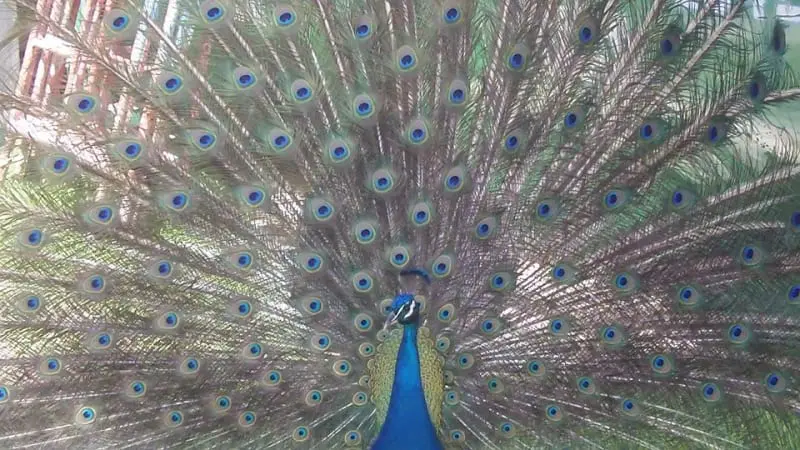
This of course applies to avian creatures which are some of the most prolific and diverse creatures on earth who also have the amazing ability to fly. Design is a factor of intelligence in which God devised a plan to accomplish the purpose of overcoming gravity in air. The bird’s structure has to be made of special material that is light enough to fly. It also requires a mechanism for its motion to happen freely.
This special design could not logically come from natural evolutionary forces. It could only be a product of design from beyond any human intelligence. The only conclusion one can make is that it came from an outside source much smarter than we are which can only be described as God.
Here is a brief example of detailed evidence of the magnificent design of these majestic avian creatures that sets them so far apart, defying evolution in every way. let the evidence speak for itself.
1. RESPIRATORY SYSTEM
Of all animals on earth, birds have the most efficient respiratory system. They have naturally high metabolisms to support the load for large muscles to move their wings for flight. Birds do not breathe like any other mammal or reptile as they lack a diaphragm. Instead, a bird is the only animal with a one-way flow of air to its lungs with an additional nine specially-designed air sacks.
2. CIRCULATORY SYSTEM
Birds are considered the athletes of all mammals and reptiles because their four-chambered hearts are powerful and move large volumes of blood efficiently to keep their body temperature at 1000 to 1070 F. Their hearts have to support birds who migrate and have to fly for long periods of time without resting.
3. SKELETAL SYSTEM
Flight requires birds’ bodies to be as light as possible. The bird’s skeletal system easily reaches this requirement with hollow bones that have inside struts to keep the bones strong and to keep its mass per unit volume the lowest of all vertebrates. These bones also provide structure (with the aid of feathers) for lift just like that of planes manufactured today. Another remarkable characteristic is that many of a bird’s bones are fused together for strength for the stress that flight requires. Lastly, there is a large breast bone especially designed for the two largest muscles in their bodies to be attached.
4. MUSCULAR SYSTEM
There are significant design differences between birds and other creatures, especially in the muscular system. Birds have distinctly predominant breast muscles. Most of us have observed this on Thanksgiving Day when carving a turkey. These muscles are extremely important for flight because they provide down stroke for lift and thrust. Another huge distinction birds have is their absent back muscles. Instead, they have a specialized pulley system called the supracoracoideus. It’s located under the wing and pulls the wing up, demonstrating a design system found nowhere in vertebrates.
5. FEATHERS
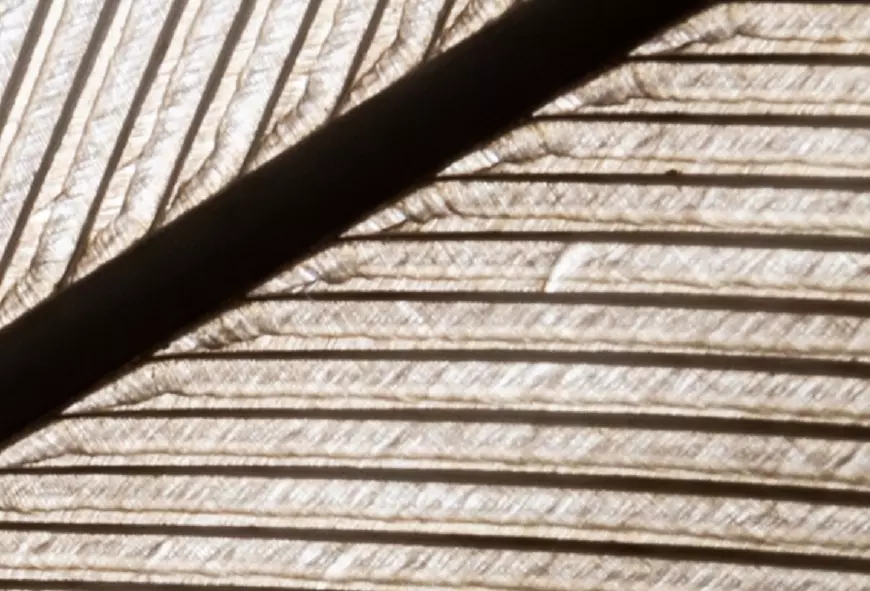
Birds have a distinctive outer covering over their feathers which are one of the most complex outer coverings found in all vertebrates. Each feather has an assigned position on the bird’s wing, directed by its shape and length. Remarkably, they all have their own unique shapes, all playing a specific role in flight.
The feather structure is another marvel of design. Feathers are extremely light and have the capacity to lock on to one another to form a strong protective barrier and act like a solid outside surface to divert air flow and provide insulation for the bird. It has a microscopic mechanism similar to Velcro in order to achieve this function, allowing flexibility and making flight possible. It has microscopic hooks and barbules, which are unique structures to make feathers stick together in one direction.
Birds need to keep their feathers in one direction because they also have a preening gland that produces oil located at the base of the spine. With the use of their beak, they use their preening gland to oil down their feathers. This is so that the hooks will stay in place and can slide easily in order to give the feather the flexibility to move as needed without decreasing the strength of the wing.
The exquisite design of the Aves class qualifies as unique in so many ways that it can only lead to an all-intelligent Creator who occupies a place much higher than we can imagine. It is in the details that we can see our maker. He is the ultimate thinker – the only one who put all things together. He keeps us intrigued as we dig down deep and excitedly seek to find what He will reveal to us. To deny that this is not a beautiful masterpiece of work from a benevolent Creator is foolishness to the highest degree. Evolutionists have a deep history of denying design from an outside intelligence and continue to make preposterous claims that nature is the creator and designer.
The Patterns which Birds’ Feathers Display are Unique
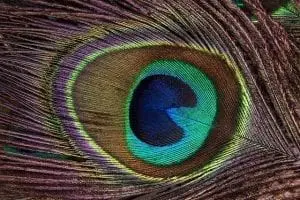 The colors of a peacock (male peafowl) that we see are reflected through various thin layers of film from the microscopic parts of the feather. These tiny parts are the barbules that makes the hooks of the feathers. The impressive deep blue neck of the peacock with its 200 tail feathers standing straight-up making an enormous majestic fan like shape producing a splendid display as its tail muscles contract to let everyone know that he is here including the female peahens.
The colors of a peacock (male peafowl) that we see are reflected through various thin layers of film from the microscopic parts of the feather. These tiny parts are the barbules that makes the hooks of the feathers. The impressive deep blue neck of the peacock with its 200 tail feathers standing straight-up making an enormous majestic fan like shape producing a splendid display as its tail muscles contract to let everyone know that he is here including the female peahens.
This magnificent display itself is made of symmetrical design with a numerous eye shaped pattern perfectly distributed with uniform space throughout the whole display. Each eye is precisely designed with thousands of components not only to give its unique shape, but its distinctive color.
How did all this happen?
The only answer is from a Creator that not only is an extraordinary engineer/designer but one who comprehends beauty and creativity that is meant for us to see and appreciate. It is Him showing His glory through the creatures He made for us.

